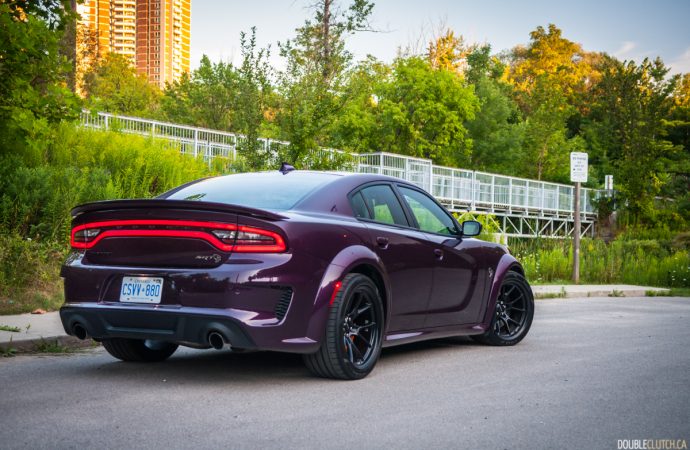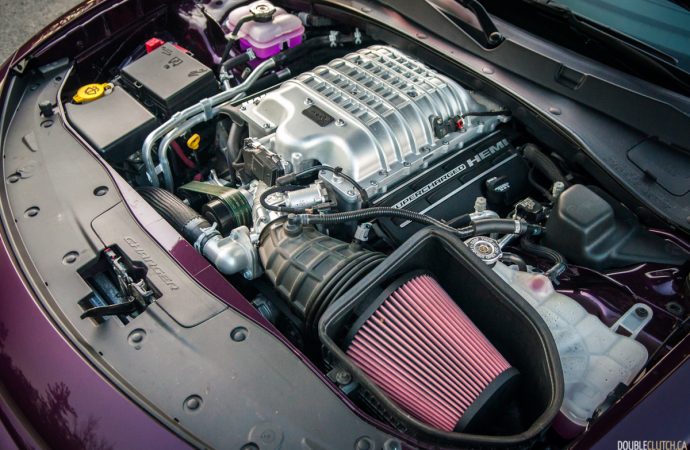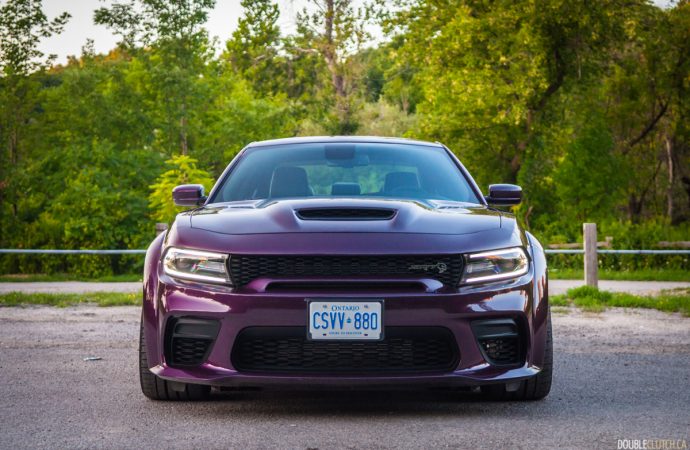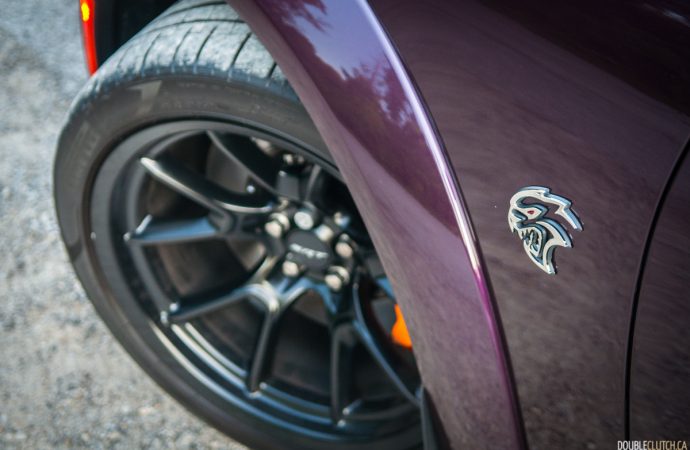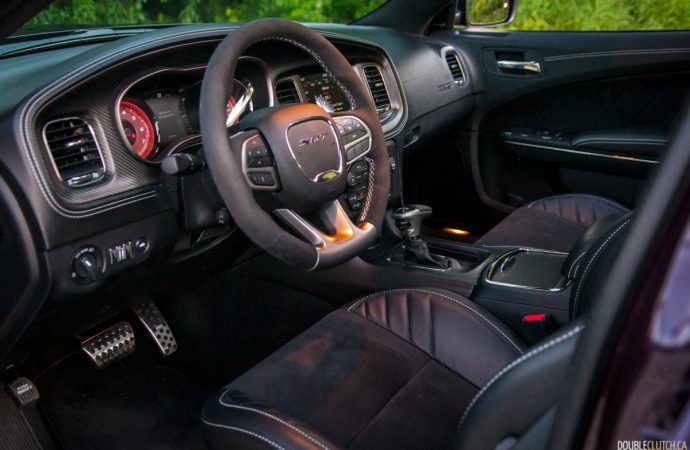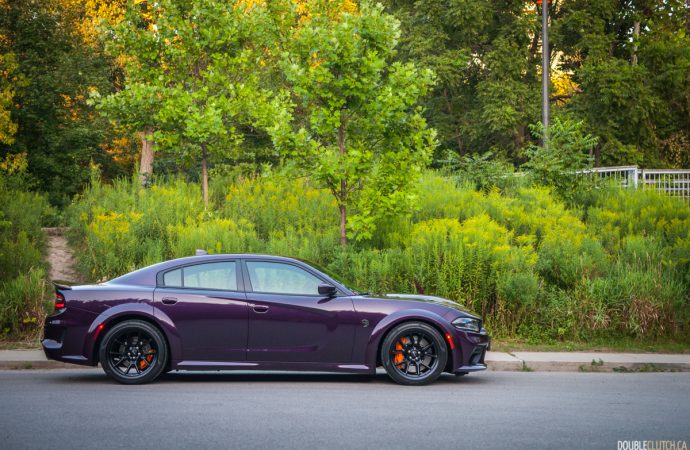By now, Dodge’s Hellcat duo need no introduction. Since their debut in 2015, the Charger and Challenger Hellcat breathed new life into an already outdated platform, defying all odds by (quickly) becoming the darlings of gearheads pretty much everywhere. Trouble is, the automotive world is a very different place today than it was six years ago: screens are everywhere, we’re inching ever closer to electrification and autonomy, and the Italians are out as Dodge’s corporate shot-callers. Is there still a place in this world for a car like the 2021 Dodge Charger SRT Hellcat Redeye?
Hell yeah, but perhaps not for much longer. See, when PSA Group (the French conglomerate in charge of Peugeot and Citroën, among a few others) officially merged with Fiat Chrysler earlier this year to become Stellantis, the tides began to turn. As with many other automakers these days, Stellantis is bent on electrification, promising a slew of electrified models in the next few years. If it means disbanding Dodge’s SRT division responsible for batty cars like the Charger and Challenger Hellcat, then so be it — and if you’re thinking about writing an impassioned letter to the French, pleading to spare the SRTs and signed by the president of your local Hellcat club, you’re already too late.
But there’s no point in constantly worrying about the future. All good things must eventually come to an end, and while it may seem like the Charger Hellcat’s days could be numbered, I recently learned to enjoy what we have, while we have it — and that is incredibly easy when you have a tire-shredding V8 at your beck and call.
There are no surprises under the Charger Hellcat’s hood. As always, a 6.2-litre supercharged Hemi V8 powers this behemoth, putting out 797 horsepower and 707 pound-feet of torque in Redeye flavour. Considering it weighs over 4,600 pounds, it definitely scoots: most buff books peg the Redeye’s 0-60 mph (96 km/h) run at about 3.5 seconds. Keep your foot in it and you’ll cover a quarter-mile in under 12 seconds give or take, and with enough road, you’ll top out at an absurd 203 mph, or 326 km/h.
Beyond the power bump, the Charger Redeye receives a Costco run’s worth of components borrowed from the Challenger Demon, including a larger twin-screw supercharger, a beefed-up transmission, upgraded connecting rods and pistons, and reworked fuel injection and valvetrain systems, among many other tweaks beneath the skin.
It’s all a bit much, since nobody in their right mind would call the regular Hellcat underpowered and slow. But Redeye or not, Hellcats were never about being sensible and you’ll never tap into that performance on a daily basis without the threat of losing your licence. Every stretch of open road, every stoplight where you’re first in line is ripe with temptation to just floor it, especially if you’re about to rip through an underpass or a tunnel. And not if, but when you do, the Redeye will wag its tail and the 305-section Pirelli summer tires will easily break loose, even with stability control fully engaged, but there’s a commendable amount of grip through corners.
If you’re worried about fuel economy, just look away. Officially, the Charger Redeye is rated at 19 L/100 kilometres city, 11.5 highway, and 15.6 combined, but the trip computer settled at 16.8 after a week’s worth of shenanigans. As if you buy a Hellcat for the fuel economy.
Still, you just can’t argue with that big, stupid smile on your face each time you stomp on the loud pedal. The Charger Redeye is brash and excessive, but it’s properly entertaining and yet surprisingly demure when you aren’t driving like a bat out of hell. The adaptive Bilstein suspension is compliant and well-composed, wind and road noise are fairly muted, and while steering feedback is almost non-existent, it’s responsive and well-weighted
Visually, you’ll need to look closely to spot the difference between the Redeye and lesser Chargers. The widebody kit and the 20-inch wheels are the main giveaways, while the badges on the front fenders have, well, red eyes. You also have a red speedometer inside that goes all the way up to a stratospheric 340 km/h.
Ah, right. Inside. This is where it falls apart just a little bit. It’s a comfortable enough environment, with plenty of space for yourself and your passengers all around. The massive trunk is usable, and the Uconnect infotainment system — controlled via an 8.4-inch touchscreen — is as intuitive as ever. But look closer, and the Charger Redeye’s roots as a $40,000 sedan become apparent: fit-and-finish isn’t particularly noteworthy, and the overall layout shows the Charger’s age. The available $995 Alcantara and $1,495 Carbon & Suede Interior packages class up the joint, but still, it’s clear all the R&D dollars went into the greasy bits — and that’s OK!
Price-wise, the Charger Redeye is either a tall ask or a performance bargain, depending on how you look at it. Starting at a tick over $105,000, our six-figure Charger tester was fitted with a number of bits and bobs, including but not limited to the two aforementioned interior trim packages, an upgraded 19-speaker Harman/Kardon sound system, a power sunroof, and an extra $295 for the rockin’ paint colour Dodge calls Hellraisin’, bringing the bottom line to $116,685.
It isn’t exactly cheap, but you can save a few bucks by skipping the sunroof and the upgraded audio system — you’ll want to listen to the Hemi’s soundtrack, anyway. Still, it almost makes you wonder if a BMW M5 Competition with few, if any option boxes ticked, is worth the jump, provided you’re willing to give up a bit of horses.
Nah, probably not. The 2021 Dodge Charger SRT Hellcat Redeye Widebody is on a whole other level, combining absurd, addictive, and hilarious performance in a deceptively comfortable and practical package. It’s a big brute that bludgeons you over the head with horsepower, speed, and testosterone, but it’s also a truly special car in its own endearing (and flawed) way. Best enjoy it while it lasts, because all good things must eventually come to an end.
See Also:
2020 Dodge Charger SRT Hellcat


















